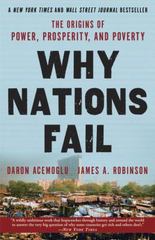Question
Problem 2.5. Consider the economy presented in Problem 2.4 and assume that there was no inflation (i.e. prices were stable) at equilibrium and that households
Problem 2.5. Consider the economy presented in Problem 2.4 and assume that there was no inflation
(i.e. prices were stable) at equilibrium and that households did not expect it in the future. Analyze how
the economy will react to an exogenous price shock (e.g. a global increase in oil prices) that will cause
a one-off jump in prices by 10% in the first year.
a) Calculate the paths of inflation, GDP and prices in the following years. After how many years will the
economy (approximately) return to equilibrium?
b) Analyze the reaction of the economy in a situation where the central bank increases the nominal
money supply by 5% in the first year, so as to mitigate the effects of nominal money demand growth.
How long will it take the economy to recover this time?
c) How quickly will the economy return to equilibrium if the central bank keeps the real money supply
unchanged?
d) Compare the final new price levels in equilibrium in points (a)-(c). What is the difference?
e) How would your answers differ, if inflation expectations in the economy were adaptive
(e.g.
= 0,41)?
f) Why does the central bank sometimes decide to tighten monetary policy amid a large price shock?
Problem 2.6. A simple Taylor Rule can be described by the equation:
= + + ,
+ , ( )
Assume that the inflation target is 2%, the natural real interest rate in the economy is 1%, and the output
gap is closed.
a) Using the Taylor rule, calculate what the optimal interest rate should be if, as a result of a price shock,
inflation exceeds the target by 2 percentage points.
b) Now assume that due to the price shock, GDP will drop 5% below its potential level. How should the
central bank react in such a situation?
c) What alternative monetary policy tools can the central bank use if Taylor rule implies that it should
cut interest rates below zero.
Step by Step Solution
There are 3 Steps involved in it
Step: 1

Get Instant Access to Expert-Tailored Solutions
See step-by-step solutions with expert insights and AI powered tools for academic success
Step: 2

Step: 3

Ace Your Homework with AI
Get the answers you need in no time with our AI-driven, step-by-step assistance
Get Started


